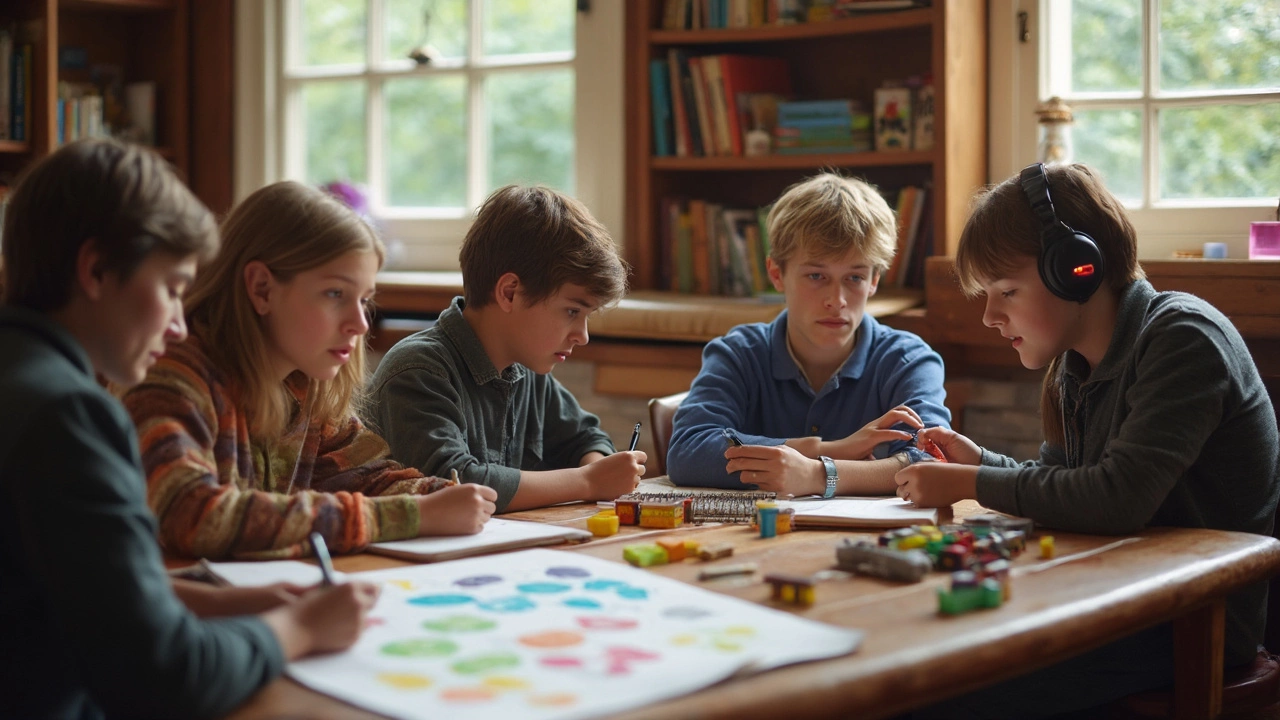Learning Methods: Practical Strategies for Every Learner
When it comes to learning, one size definitely does not fit all. Kids, teens, and adults all respond to different triggers, and the tools you use can make a huge difference in how fast and deeply they absorb new ideas. Below you’ll find down‑to‑earth tips that work in the classroom, at home, and online, so you can pick the method that clicks for you or your child.
Hands‑On Learning for Young Children
Little ones learn best when they can touch, move, and explore. Think of activities like building a tower with blocks while naming colors, or sorting natural objects (leaves, stones) by size. These simple tasks turn abstract concepts into concrete experiences, helping the brain wire connections faster. Mixing play with purpose also keeps motivation high – a child who’s having fun won’t notice they’re actually studying.
Another effective trick is the “learning corner” setup. Designate a small area with puzzles, magnetic letters, and storybooks. Rotate the materials every week to keep curiosity alive. When a child chooses what to engage with, they develop self‑direction early, a skill that later supports independent study.
Adult and Online Learning Techniques
Adults often juggle work, family, and personal goals, so flexibility is key. Self‑directed learning works wonders – start by pinpointing a specific problem you want to solve, then hunt for short videos, articles, or micro‑courses that address that exact need. This problem‑focused approach mirrors the core principle of adult learning: relevance drives engagement.
Online versus distance learning? The main difference lies in interaction. Online classes usually include live video, real‑time chats, and quick feedback, while distance programs may rely on pre‑recorded materials and email support. Choose the format that matches your preferred level of interaction. If you thrive on instant answers, a live webinar or virtual classroom is a better fit.
Visual, auditory, and kinesthetic styles still matter for adults. If you’re a visual learner, create mind maps or color‑coded notes. Auditory learners benefit from podcasts or reading text out loud. Kinesthetic learners keep a notebook handy and write summaries by hand – the physical act reinforces memory.
Private tutoring can speed up progress for both kids and adults. An academic coach tailors sessions to your weak spots, whether that’s a tricky math concept or a language barrier. Even a few one‑on‑one hours a week can give you the focused practice you need without the overwhelm of a full class.
Finally, don’t forget the power of routine. Set a consistent study slot, keep the environment tidy, and break sessions into 25‑minute blocks with short breaks (the Pomodoro technique). This rhythm trains the brain to enter “focus mode” quickly, making each study period more productive.
By mixing hands‑on play for youngsters, self‑directed problem solving for adults, and the right amount of technology, you can build a learning plan that sticks. Experiment with a few methods, track what feels most natural, and stick with what works. Learning is a lifelong journey – the better you understand your own style, the smoother the ride will be.
Types of Learning: Understanding the 4 Main Ways We Learn Best
Discover the four main types of learning that guide how we absorb and use new information. This article unpacks the science and stories behind visual, auditory, reading/writing, and kinesthetic learning styles. Explore tips for each type and find out which methods suit you best. Get inspired by surprising facts, and see how understanding your learning style can boost your success. Perfect for students, parents, and teachers alike.
